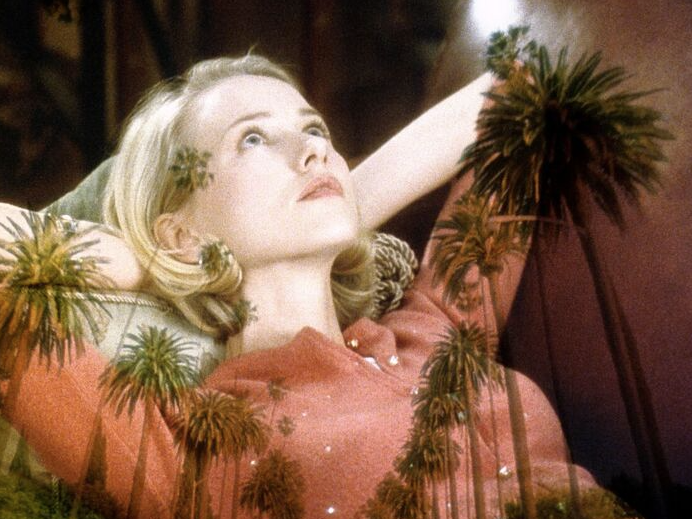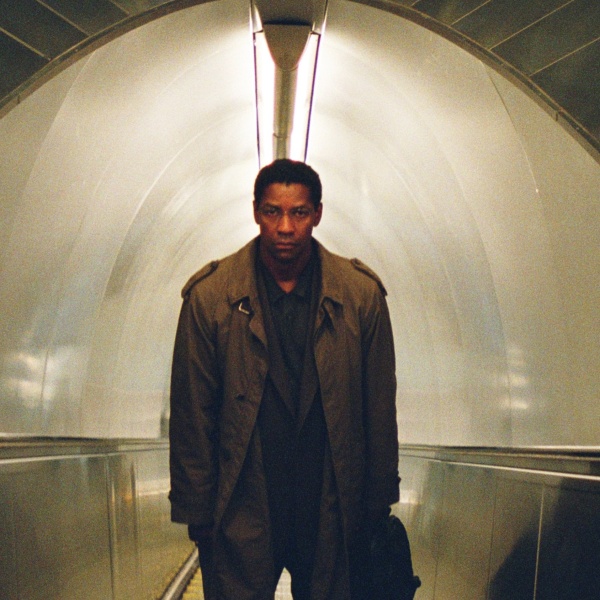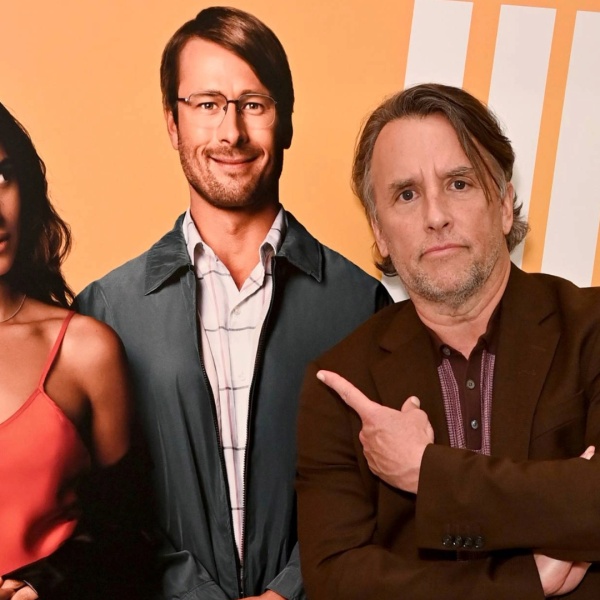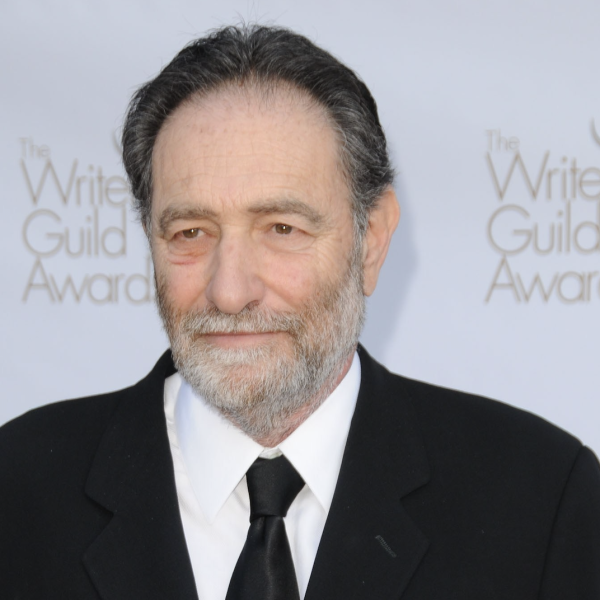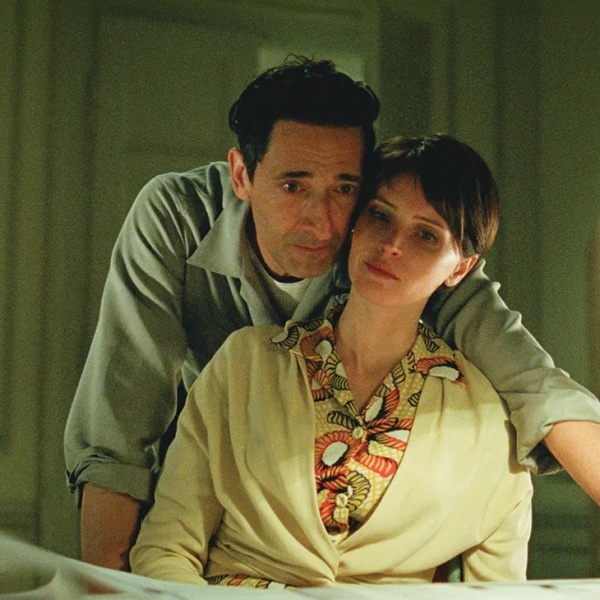There are few films quite as beloved—or as baffling—as David Lynch’s “Mulholland Drive.”
After being praised as the best film of the 21st century in a BBC critics poll in 2016, “Mulholland Drive” took the top spot on the “Best of the Decade” lists from Film Comment, the Los Angeles Film Critics Association (LAFCA), Reverse Shot, and IndieWire. Now, ahead of its 20th anniversary on Oct. 19, it’s time to uncover many of the mysteries behind the haunting 2001 film.
The plot seems simple enough: a young woman, played by Laura Harring, has amnesia following a car crash in the Hollywood Hills. Naomi Watts is her naive roommate, an aspiring actress. But that premise — just like the vehicle careening off the twisting, paved Mulholland Drive — eventually falls by the wayside, giving way to a debate over gender identity, the porous nature of reality, and the personal ramifications of fame.
“Like a lot of critics who adore the movie, none of us got it the first time,” Los Angeles Times film critic Justin Chang, who managed the LAFCA “Best of the Decade” poll, previously told IndieWire. “Any person who says they did is lying.”
Even Lynch apparently let the story lead the way. “I started asking him questions,” star Justin Theroux explained as part of the IndieWire Awards Spotlight in 2021. “When I finished a question, [Lynch would say], ‘You know, I don’t know, buddy. But let’s find out.’ He wasn’t being cute or cheeky or evasive; he genuinely didn’t know. He’s like, ‘I don’t know.’ It’s like you’re on an escalator into a cloud with him, you never know where the escalator lets off.”
Two decades later, it’s time to see just exactly how that “escalator” came to be. Here are nine surprising details about “Mulholland Drive” that even diehard fans might not know.
-
“Mulholland Drive” Was Almost a “Twin Peaks” Spinoff

Image Credit: Twin Peaks Can you imagine “Mulholland Drive: The Miniseries”? According to “Twin Peaks” co-creator Mark Frost, beloved fan favorite Audrey Horne (Sherilyn Fenn) was supposed to land a spinoff TV series following her exit from the cursed Twin Peaks town.
“I lived on Mulholland Drive at the time and I thought it was a great title,” Frost told Yahoo Entertainment in April 2020. “We had considered spinning off the Audrey character and setting her loose in Hollywood, in a modern noir. We had very preliminary talks; it drifted away, and then six years later, I hear it’s going be a pilot at ABC.”
However, the network ultimately opted to cut ties with any “Twin Peaks” connection in 1999, and Frost speculated that it was due to how the series “crashed and burned” after his depature. “There wasn’t much appetite for spinning off a series from it,” Frost continued. “I wasn’t involved, and frankly, I needed a break from working with Lynch at that point.”
Meanwhile, Lynch landed additional funds from French producers Pierre Edelman and Alain Sarde after ABC passed on the “Mulholland Drive” pilot, leading to the feature film being made through StudioCanal. Naomi Watts took over for Sherilyn Fenn, the role of Audrey was changed to Betty, and the rest is “Twin Peaks” fan fiction history.
-
Lynch Had “Zero Ideas” on How to Expand “Mulholland Drive” into a Feature Film

Image Credit: Alfonso Jimenez/Shutterstock They don’t call it Lynchian for nothing. Lynch has come up with some of the most twisted imagery and themes in cinema history, but when the “Mulholland Drive” pilot was dropped by ABC, the auteur was forced to become inspired once more.
“The day came when I got the greenlight to turn it into a feature, and I had zero ideas. I just hadn’t been thinking about it,” Lynch said during the Beaune International Thriller Film Festival in 2013. “Then came the day I needed to get those ideas, and that night, I sat down during my meditation and in there, I say like a string of pearls, all the ideas came, all at once, and there it was.”
Lynch turned to transcedental meditation to “expand consciousness” as part of the filmmaking process. “Consciousness has qualities: intelligence, creativity, happiness, love, energy, and peace. So you expand those things, you’re expanding creativity,” Lynch continued. “The ideas flow more, and the enjoyment of the work gets more and you have more energy and more love of life.”
And the very thing that shut down his TV series is what drove Lynch’s determination to capture the “always changing” film industry in “Mulholland Drive.”
“Hollywood is a dream,” Lynch said. “Any film about Hollywood is a small, small slice of Hollywood.”
-
Laura Harring Could Relate a Little Too Much to Her Role

Image Credit: Photo by Moviestore/Shutterstock Lynch specifically selected the first Latina Miss USA winner, Laura Harring, without so much as an audition. Harring was in such a hurry to meet with Lynch that she had a fender bender on the way to his casting office.
“It was so bizarro that he wanted to meet me ‘right now’ that I rear-ended the guy in front of me,” Harring recalled to The Hollywood Reporter in 2019.
Once she read that her character Rita is in a limo accident, leading to her amnesia, Harring had “goosebumps” immediately. “I knew it was a masterpiece,” Harring mused. “I starting crying and feeling so grateful…Everything was so perfect, meticulous.”
Harring also had a past near-death experience that she channeled on set. At age 12, she was struck by a stray bullet while going to the movies with her family in San Antonio, Texas.
“It felt like a slingshot,” the actor recalled of being hit in the skull. “It’s very intense when you’re close to death. Because everything slows down, dreamy and slow.”
“Mulholland Drive” is also dedicated to Lynch’s former assistant Jennifer Syme, an aspiring actress who was killed in a car accident in April 2001.
-
Naomi Watts Almost Quit Acting Before “Mulholland Drive”

This is the girl, indeed. Despite a “devastating” first meeting with Naomi Watts, director David Lynch requested they connect again under more casual circumstances.
“Naomi came and didn’t look exactly like the photograph that I had fallen in love with,” Lynch recalled during a Criterion Collection interview. “So I asked Naomi if she could come back with some make-up on and we did and we talked.”
That second chance completely changed Watts’ career. “[David] looked at me, really looked at me, and he was beaming with light and somehow he relaxed me and I could show my true self,” Watts said, adding that she was ready to quit Hollywood before the meeting “because of so many years of rejection I had built up veneer after veneer.”
Watts’ “down on [her] luck” past only added to her performance as Betty. “It’s a great symbolic thing,” she said of the film’s namesake. “It can mean a lot of great things to some people and a lot of dark things to others—the long, unending, winding road.”
Or, as Lynch put it, “Mulholland Drive is a famous road with much, much mood. There’s so many stories about that road and it’s a very dreamy thing to think about—so many people come here to realize their dreams.”
For Watts, her dream was just getting started.
-
“Sunset Boulevard” Acted as Inspiration For Capturing the Plight of Stardom

Image Credit: Everett Collection Lynch included subtle references to one of his favorite films, “Sunset Boulevard,” in “Mulholland Drive.”
While both Oscar winners deal with the inherent tragedy of fame, Lynch replicated specific shots of the similarly-titled 1951 film. From the Paramount Gates to using the same luxury car in “Sunset,” Lynch created an ode to the beloved thriller.
Betty (Naomi Watts) was also modeled in part off of “Sunset” protagonist Norma Desmond (Gloria Swanson) as both actresses “experience some of the negative sides of acting,” Lynch described David Lynch: Interviews, via Mental Floss.
Lynch described the three-act structure for “Mulholland Drive” as a descronstruction of the Hollywood narrative. “Part one: she found herself inside the perfect mystery,” Lynch said. “Part two: a sad illusion. Part three: love.”
Fortunately, no one ends up face down in a pool.
-
Naomi Watts Was “Mad” at David Lynch For This Scene

Image Credit: Mulholland Drive As mind-bending as it is sexy, “Mulholland Drive” as plenty of steamy scenes — but, according to Naomi Watts, she was most uncomfortable with her character Betty’s masturbation sequence.
“I was mad at him for making me do this!” Watts said in the Criterion Collection interview in 2015. “I remember saying, ‘David, I can’t do this!, I can’t do this!’ and being mad at him.”
Lynch constructed a mini tent around Watts during production so she had more privacy, but she still called the experience “wildly uncomfortable,” despite feeling the need to get the perfect take.
“The thing with David is he just keeps you going, you want to please him because he’s after something really true and you don’t want to give up,” Watts said.
Co-star Laura Harring similarly did not want to strip down for the same-sex love scene with Watts. “I felt very vulnerable,” Harring told The Hollywood Reporter. “I was in my dressing room and was on the verge of tears. It’s hard. There are a lot of people there.”
She added: “[Naomi and I] were friends. It was pretty awkward. [David] came up to us and said, ‘Now don’t be afraid to touch each other’s breasts now.’ That was the last take, and that was the one he used.”
For Watts, the sex scene proves to be more iconic than her solo masturbation sequence: “Fifteen years later it’s very hot,” Watts said in 2016. “It’s very tender.”
-
Was Justin Theroux’s Character Inspired by Jack Nicholson?

Image Credit: Mulholland Drive Justin Theroux got into the swing of things on set, thanks to an infamous story involving the real-life “Mulholland Man,” Jack Nicholson. Playing hot-shot director Adam Kesher, Theroux smashes a luxury car with a golf club…and that’s just par for the course of Nicholson’s career.
The “Chinatown” Oscar nominee was charged with vandalism and assault for allegedly attacking a Mercedes Benz with a golf club after the vehicle cut Nicholson off in traffic, as reported by the Los Angeles Times. The charges were later dropped after Nicholson apologized and settled out of court.
Another clue that Lynch had Nicholson in mind when shooting the scene? Nicholson lived on Mulholland Drive, and is rumored to have gotten the nickname “Mulholland Man” thanks to his role in “Chinatown.”
Of course, neither Theroux nor Lynch have confirmed he parallel with Nicholson—in part because no one knew what was going on during production.
Theroux recalled “peppering [Lynch] with a million questions” about the story, including, “‘Well, why am I there? Who’s the cowboy? What’s going on? What reality are we in?’,” as Theroux told IndieWire.
At the time of its release, Theroux revealed that he believes Lynch is “genuinely happy for it to mean anything you want,” regardless of the intention behind “Mulholland Drive.”
“He loves it when people come up with really bizarre interpretations,” the actor said to the Washington News in 2001. “David works from his subconscious. It can be fun to give yourself over to that.”
Watts added in the Criterion Collection roundtable, “Even if it doesn’t make sense to everyone, he’ll never not let it be truthful. It has to resonate in authenticity.”
Well, a true Hollywood story about Nicholson doesn’t get more authentic than that.
-
David Lynch Has a Guide to Watching “Mulholland Drive”

Image Credit: Mulholland Drive Just in case your viewing experience of “Mulholland Drive” gets a little too rocky (just how many timelines are there, again?), Lynch has compiled a road map to guide you through the head-scratching plot.
“So this thing happened that ‘Mulholland Drive’ was a big success in France and I was asked if I could come up with these 10 short clues to the movie,” Lynch explained to Vulture in 2018. “Normally, I would’ve said no, but—and I don’t know why—I came up with things that people could think about when they watched it. But I thought the clues were only going to exist in France and then it blossomed on the internet—that’s what I mean about the world getting smaller—and people started asking me for more clues.”
The now-viral list includes 10 hints to decipher the story, including:
1. Pay particular attention in the beginning of the film: At least two clues are revealed before the credits.
2. Notice appearances of the red lampshade.
3. Can you hear the title of the film that Adam Kesher (Justin Theroux) is auditioning actresses for? Is it mentioned again?
4. An accident is a terrible event—notice the location of the accident.
5. Who gives a key, and why?
6. Notice the robe, the ashtray, the coffee cup.
7. What is felt, realized and gathered at the Club Silencio?
8. Did talent alone help Camilla?
9. Note the occurrences surrounding the man behind Winkie’s.
10. Where is Aunt Ruth?
Time for a rewatch!
-
You Can Get Drunk With David Lynch…Kind Of

Image Credit: AP/Shutterstock In honor of the film’s 10-year anniversary in 2011, Lynch opened Parisian night club Silencio along the Grands Boulevards District in the City of Light. The multi-talented filmmaker designed the bar himself, with Club Silencio boasting a 24-seat movie theater, an art library, and a reflective dancefloor in case you wanted to question your identity like the mirrored “Mulholland Drive” leads.
“Silencio is something dear to me. I wanted to create an intimate space where all the arts could come together,” Lynch told The Guardian in August 2011. “There won’t be a Warhol-like guru, but it will be open to celebrated artists of all disciplines to come here to programme or create what they want.”
The price tag of an €780 yearly membership was “cheap given the artists who will be working here,” according to Lynch. But hang around until after midnight and “anyone can get in,” doppelgänger or not.
